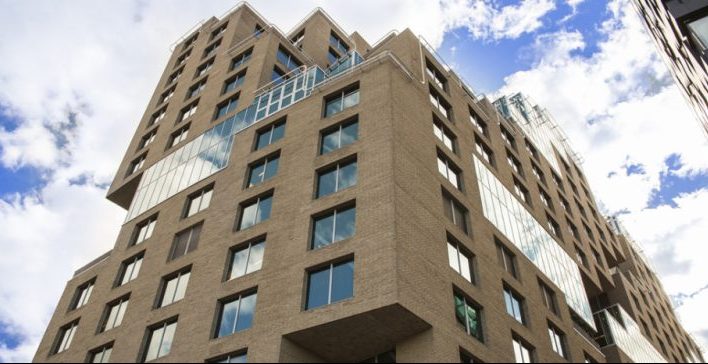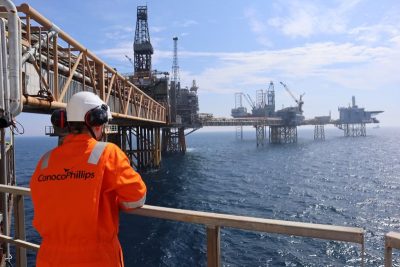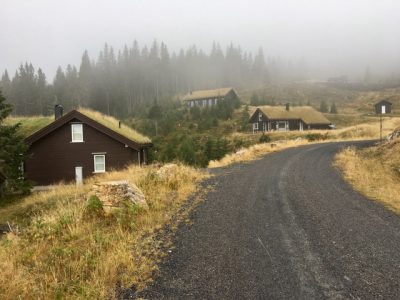NEWS ANALYSIS: Never before have some of Norway’s largest companies and banks generated more profits, often tied to Russia’s war on Ukraine. Hundreds of thousands of individual Norwegians, families and small businesses, however, are struggling with record high costs, new economic uncertainty and warnings that a rough winter lies ahead.

The contrasts, and pure paradox, can hardly be greater: Norway’s biggest bank, DNB, reported another quarter of record-high profits late last week just as borrowers are worrying about rising mortgage payments. DNB and most other banks have been quick to raise interest rates on loans, but not nearly as quick to raise them accordingly on savings accounts. As a result, they’re earning well while customers are only getting around 1 percent interest on deposits and facing a 6.9 percent rise in Norway’s Consumer Price Index.
Norwegian energy companies, meanwhile, continue to command high market prices for oil, gas and electricity, also at the expense of ordinary consumers. Fertilizer and chemical company Yara also reported huge increases last week in third-quarter revenues and profits, prompting its CEO Svein Tore Holsether (among Norway’s most highly paid executives) to describe the situation as “extreme on all fronts.” He’s concerned enough that Yara, in cooperation with the World Food Programme, has donated fertilizer to boost food production in parts of the world hit by famine.
Newspaper Dagens Næringsliv (DN) has reported how “no other country in the world earns so much on the war, the climate- and energy crises as Norway.” Russia’s war on Ukraine has sent energy prices skyrocketing, and Norway is a major energy producer. Its trade surplus hit NOK 122.4 billion in September, more than twice as much as last year at this time, thanks mostly to offshore oil and gas revenues and record seafood exports.
Norway’s mainland economy (minus gas and oil), meanwhile, recorded a trade deficit of NOK 36.4 bilion, according to the latest figures from state statistics bureau SSB (Statistics Norway). Most of the offshore oil and gas proceeds are also funneled into Norway’s sovereign wealth fund known as the Oil Fund, to save for future generations. The country’s one-year-old government, led by the Labour and Center parties, is thus cracking down on how much of the fund’s returns can be used to pad its state budget proposal for next year. That’s resulting in a much tighter budget and a wave of new and higher taxes.
Ordinary Norwegians are thus facing a much higher cost of living and a new sense of economic uncertainty, after years of prosperity. It’s not just the shockingly high electricity bills now arriving every month, but much higher prices for most everything else. SSB recently reported an 11.3 percent rise in transport costs, a 12.1 percent rise in food and non-alcoholic drinks, an 8.7 percent rise in hotel and restaurant bills and a 7.6 percent rise in prices for household items and maintenance.

DNB itself reported that its customers are now spending much less money on expensive items. Debit- and credit card use is high, but there are noticeable cutbacks on goods like sporting equipment, TV- and entertainment systems, cars and furniture. “Those are purchases you can put off,” Harald Serck-Hanssen of DNB told DN. “There’s also a limit to how many flat-screen TVs you can use.”
Hotels and restaurants are still enjoying a post-pandemic boom in business, tied largely to pent-up demand. DNB officials expect less travel and entertainment purchasing ahead, though, and fewer customers in retail stores. Even the head of the Nille retail chain that sells a wide variety of household goods at relatively low prices is worried: “The world has perhaps lived beyond its means in recent years,” Kjersti Hobøl told DN last week, “but in my long career I’ve never experienced so many negative things hitting consumers at the same time.” She is not expecting a strong Christmas shopping season, and Norway’s historically weak krone isn’t helping. Imports simply cost a lot more than they did last year.
It’s the sharp rise in Norway’s already notoriously high food prices, however, that continues to stun consumers at the grocery store. They shot up dramatically on July 1, when the effects of new state taxes and price hikes for highly regulated agricultural products took effect. Producers/wholesalers and retailers also negotiate prices in January and June, often leading to price hikes from February 1 and July 1.
This summer it all resulted in the highest price hikes in 40 years. A liter of milk rose by 9.2 percent, butter by 20 percent, bread by 9.5 percent, meat by an average 11.6 percent. Even a jar of jam rose by an average 17.4 percent, with producers and retailers blaming everything from higher costs for everything from electricity to transportation and personnel. One young man, student Kristian Berg Tveter, told newspaper Dagsavisen that even cheese suddenly became “a luxury item that I can’t afford anymore. I’ll be eating lots of knekkebrød (rye crackers), eggs and vegetables,” even though eggs have shot up in price, too (around 5.6 percent).

There’s a lot of finger-pointing going on again, over who’s mostly responsible for the higher grocery bills. Farmers blame historically highly profitable retail chains, which in turn blame wholesalers and all the aforementioned increases in energy and transport costs. “This is a terribly difficult situation,” Tor Helge Gundersen, purchasing chief for the Coop chain in Norway, told DN. Norwegian consumers are increasingly turning to cheaper house brands. A top executive at major food producer Orkla called this year’s price hikes “the largest I’ve seen in my 31 years in the business.”
For low- to middle-income Norwegians also hit by rising loan payments and other costs, there’s also been rising demand for emergency food supplies. On Monday the Labour-Center government admitted it had made a mistake in cutting proposed allotments to Matsentralen Norge, which offers free food to the hungry. It will now boost funding by NOK 2 million. The government is still threatening to try regulating the retail grocery sector, which continues to be dominated by just three major operators of grocery store chains.
Norwegian consumers have often responded to food price hikes at home by driving over the border to Sweden to shop. Now, however, they have to factor in high-fuel prices, and DNB reported in July that cross-border trade had declined by just over 20 percent during the first half of this year, compared to the first half of 2019, before the pandemic began.
Rising inflation has also hit the Oslo Stock Exchange just like it has others around the world, and some economists warn the worst is yet to come. Olav Chen, senior portfolio manager at Norwegian insurance firm Storebrand, thinks interest rates will remain higher than they’ve been in recent years. “It’s clear that folks worry when inflation surprises us on the upside,” noted Harald Magnus Andreassen at SpareBank1 Markets.

Norway’s central bank is widely expected to boost its policy rate again next month, after Norway’s CPI hit 6.9 percent. That’s much higher than the bank’s preferred 2.5 percent and signals the highest inflation rate in Norway since 1988. The interest rates hikes imposed already are cooling off the housing market, with prices falling an average 2.2 percent last month. Prices for a hytte (holiday home) are also falling after sharp rises in demand and price hikes of as much as 15 percent earlier this year. Now, reported newspaper Aftenposten at the end of the summer season, “the hytte party is over.” Record-high electricity rates and higher interest rates are now in the process of changing the market entirely.
Lenders may also be prodded by the government to once again tighten lending requirements. Among additional signs of a weakening economy: A sharp increase in credit card debt with payments on fully NOK 1.1 billion of it overdue, according to debt monitoring firm Norsk Gjeldsinformasjon. “It’s worrisome if the trend of rising credit card debt continues,” the firm’s leader Svein Ove Karstensen told news bureau NTB.
There’s also been a strong increase in overdue debt among retirees. The portion of debtors over age 70 who are now under pressure from debt collection agencies has risen 26 percent this year. Steadily more young Norwegians are also having trouble paying their bills, according to collection agency Fair Collection. “The numbers are alarming,” Christian Aandalen of the agency’s parent firm, Fair Group, told DN. Retirees living on fixed pensions can’t keep up with the cost of living, and many, he said, feel obliged to borrow against their homes’ equity, at a time when housing prices have begun to fall.
And now taxes are set to rise in the government’s state budget proposal for next year. Local government fees for everything from water to garbage collection are due for double-digit increases in Oslo and several other Norwegian cities, while state taxes on income over NOK 750,000 (USD 75,000) are also expected to rise, in addition to the annual tax on net worth (formueskatt). That’s setting off lots of opposition in Parliament, and the voter popularity of the government parties Labour and Center has tumbled.

Finance Minister Trygve Slagsvold Vedum has defended his first state budget, claiming that Norway’s economy remains strong. Low unemployment should make most Norwegians capable of shouldering the burden, he believes, which aims to tax the wealthier much harder than those with moderate incomes. Vedum painted an optimistic picture of the economic situation when he presented the budget earlier this month, much more optimistic than those of many commentators and economists.
Vedum admitted that inflation was “very high” but countered that wage growth was rising also, from 3.9 percent this year to 4.2 percent next year. He foresees ongoing growth in private consumption and jobs, but lower than this year. Government compensation to offset high household electricity bills will continue into next year, and some state compensation for businesses has won support in Parliament.
Others, including the head of Norway’s national employers organization NHO, worry that the state itself will continue to grow, at the expense of the private sector. “We can’t tax our way out of economic trouble,” former Prime Minister Erna Solberg of the Conservative party claimed shortly after the budget was presented. Governent negotiations with the Socialist Left Party (SV) continue, with a new state budget due to be in place before the Christmas holidays.
NewsinEnglish.no/Nina Berglund

